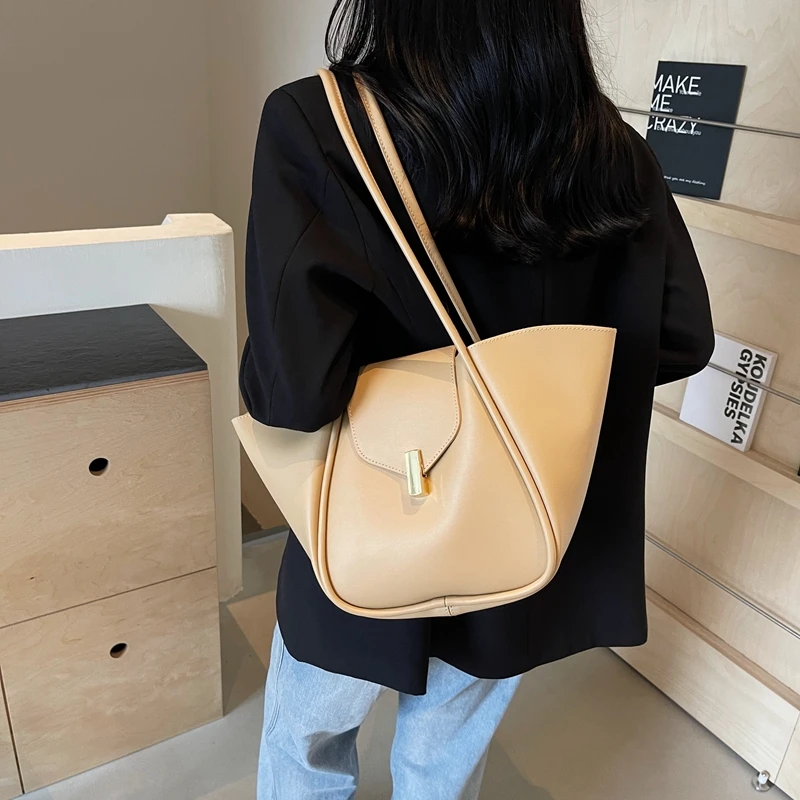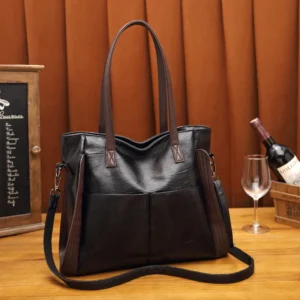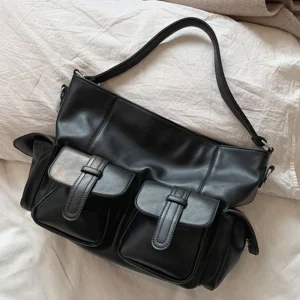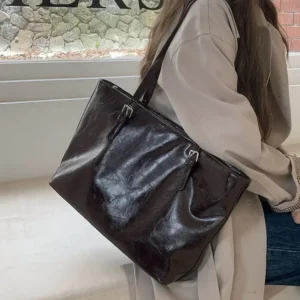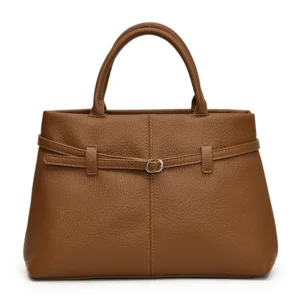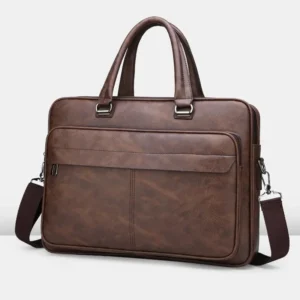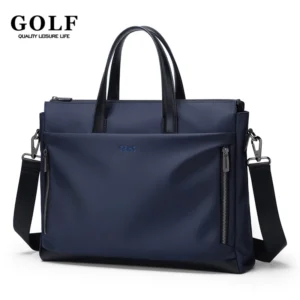Beyond Leather: Why Today’s Professionals Are Choosing Alternative Materials
The professional landscape is evolving, and with it, our choices in workwear accessories are changing too. More professionals are moving away from traditional leather bags toward high-quality non-leather alternatives that align with their values and practical needs. This shift reflects growing awareness around environmental sustainability, ethical considerations, and the impressive functionality modern materials offer.
Finding a non-leather bag that maintains a professional appearance while delivering exceptional durability presents a significant challenge. Many professionals worry that abandoning leather means sacrificing either the polished look required in business settings or the longevity expected from a premium work accessory. However, today’s marketplace offers sophisticated alternatives that effectively balance professional aesthetics with outstanding durability.
Modern material innovations have advanced to the point where many non-leather options can match or even exceed traditional leather in both longevity and professional appearance. From technical fabrics developed for extreme conditions to refined synthetic materials that replicate the sophistication of premium leather, professionals now have access to options that don’t require compromise.
This comprehensive guide will explore everything you need to know about selecting a durable non-leather professional bag. We’ll examine the materials that deliver genuine longevity, design elements that maintain professional aesthetics, and specific features that enhance functionality for today’s working professionals. Whether you’re making this choice for ethical reasons, practical advantages, or simply aesthetic preference, understanding these timeless classic leather briefcase alternatives will help you make an informed decision.
What Defines True Durability in Professional Bags
True durability in a professional context extends far beyond simply lasting a long time. For a professional bag, durability means maintaining both structural integrity and professional appearance through daily use, commuting stresses, and the occasional rough handling that inevitably occurs in busy professional lives.
When evaluating the durability of a professional bag, consider these critical factors:
Material Strength Properties – Look for high tear resistance (how well the material resists ripping when punctured), excellent abrasion resistance (ability to withstand repeated friction without showing wear), and proper water resistance (protection from light rain or spills without damage).
Construction Quality Indicators – Reinforced stitching at stress points, doubled seams along edges that bear weight, and bar-tack stitching (tight, dense stitches in a rectangular pattern) at connection points all indicate quality construction built for longevity.
Hardware Robustness – Zippers, clasps, buckles, and handle attachments are often the first points of failure in any bag. Quality metal hardware, preferably with reputation brand names like YKK for zippers, suggests better durability prospects.
Structural Integrity – The ability to maintain shape when fully loaded is crucial for professional aesthetics. This comes from proper internal framing, strategic reinforcement, and material selection.
The distinction between aesthetic durability and structural durability is particularly important in professional environments. A bag must not only continue functioning but must also continue looking appropriate for business settings. Materials that resist scuffing, maintain color consistency, and don’t degrade visibly are essential for durable leather briefcase alternatives that maintain their professional appearance.
Common failure points in professional bags include handle attachment points, bottom corners where the bag rests on surfaces, and zipper ends where stress concentrates. Quality bags incorporate reinforcement in these areas specifically to extend usable life.
Professional Aesthetics: Appearance Matters in Non-Leather Alternatives
A truly professional bag communicates competence and attention to detail before a word is spoken. While personal style varies across industries and workplaces, certain universal elements distinguish professional bags from casual alternatives regardless of material.
What makes a bag look genuinely professional rather than casual comes down to several key elements:
- Clean lines and structured silhouettes that maintain their shape, even when not fully loaded
- Sophisticated color palette dominated by neutrals (black, navy, gray, brown) with minimal contrast elements
- Restrained design with intentional details rather than decorative excess
- Quality hardware that looks substantial without being flashy
- Appropriate scale proportional to business documents and technology without excessive bulk
Professional environments vary widely in their aesthetic expectations. Traditional corporate settings typically favor more conservative designs with structured shapes and minimal branding. Creative industries often permit more design flexibility but still require a level of refinement that distinguishes professional accessories from casual bags.
A common concern about non-leather options is that they might appear “cheap” or overtly synthetic. However, premium vegan leather briefcases and technical fabrics have evolved significantly. Today’s high-quality alternatives feature sophisticated textures, proper weight, and refined finishes that convey professionalism without mimicking leather exactly.
The most successful non-leather professional bags don’t try to perfectly imitate leather—instead, they leverage the unique advantages of alternative materials while maintaining the refined aesthetic that professional environments demand.
Premium Non-Leather Materials: The Durability Champions
Ballistic Nylon
Originally developed for military flak jackets during World War II, ballistic nylon has become a durability standard in professional bags. This tightly woven fabric, typically in 1050 or 1680 denier (a measurement of thread thickness), offers exceptional resistance to abrasion, tears, and punctures.
The material’s distinctive basket weave pattern provides visual texture that masks minor scuffs and wear, making it particularly suitable for professional environments where bags need to maintain their appearance. While traditionally appearing in black, manufacturers now offer ballistic nylon in various professional colors with surface treatments that enhance water resistance.
Ballistic nylon’s primary advantages include nearly unmatched durability, excellent weather resistance, and minimal maintenance requirements. The material easily withstands daily commuting abuse while maintaining a professional appearance with simple spot cleaning. Its only significant drawbacks are a slightly technical appearance and greater weight compared to lighter synthetics.
CORDURA® Nylon
CORDURA® represents a significant upgrade from standard nylon fabrics. This branded material undergoes specialized manufacturing processes that enhance durability while allowing for greater versatility in texture and appearance.
Available in various weights (typically 500-1000 denier for professional bags), CORDURA® offers an excellent balance of durability and refined appearance. The material’s tight weave resists abrasion while maintaining a more supple feel than ballistic nylon. Premium bag makers often choose CORDURA® for professional applications because it can be finished to look less technical than ballistic nylon while still offering exceptional longevity.
CORDURA® performs particularly well in professional backpacks and messenger bags where the material’s natural drape works with rather than against the design. Its slight sheen can be controlled through finishing processes, making it adaptable to various professional aesthetics.
High-Performance Microfiber Materials
Advanced microfiber materials represent the cutting edge of synthetic fabrics for professional applications. Unlike basic synthetic textiles, these engineered materials feature extremely fine fibers (finer than silk) densely packed to create surfaces with sophisticated appearance and performance characteristics.
High-performance microfibers excel in professional bags by offering:
– Exceptional resistance to water and stains
– Surprisingly high durability despite their refined appearance
– The ability to mimic premium materials like suede or fine textiles
– Lightweight construction that reduces commuting burden
Many leading perfect professional vegan leather bags incorporate microfiber elements either as accent materials or full construction. These materials require more careful cleaning than technical nylons but offer aesthetic advantages that make them well-suited for client-facing professional environments.
Sophisticated Leather Alternatives: Professional Without Compromise
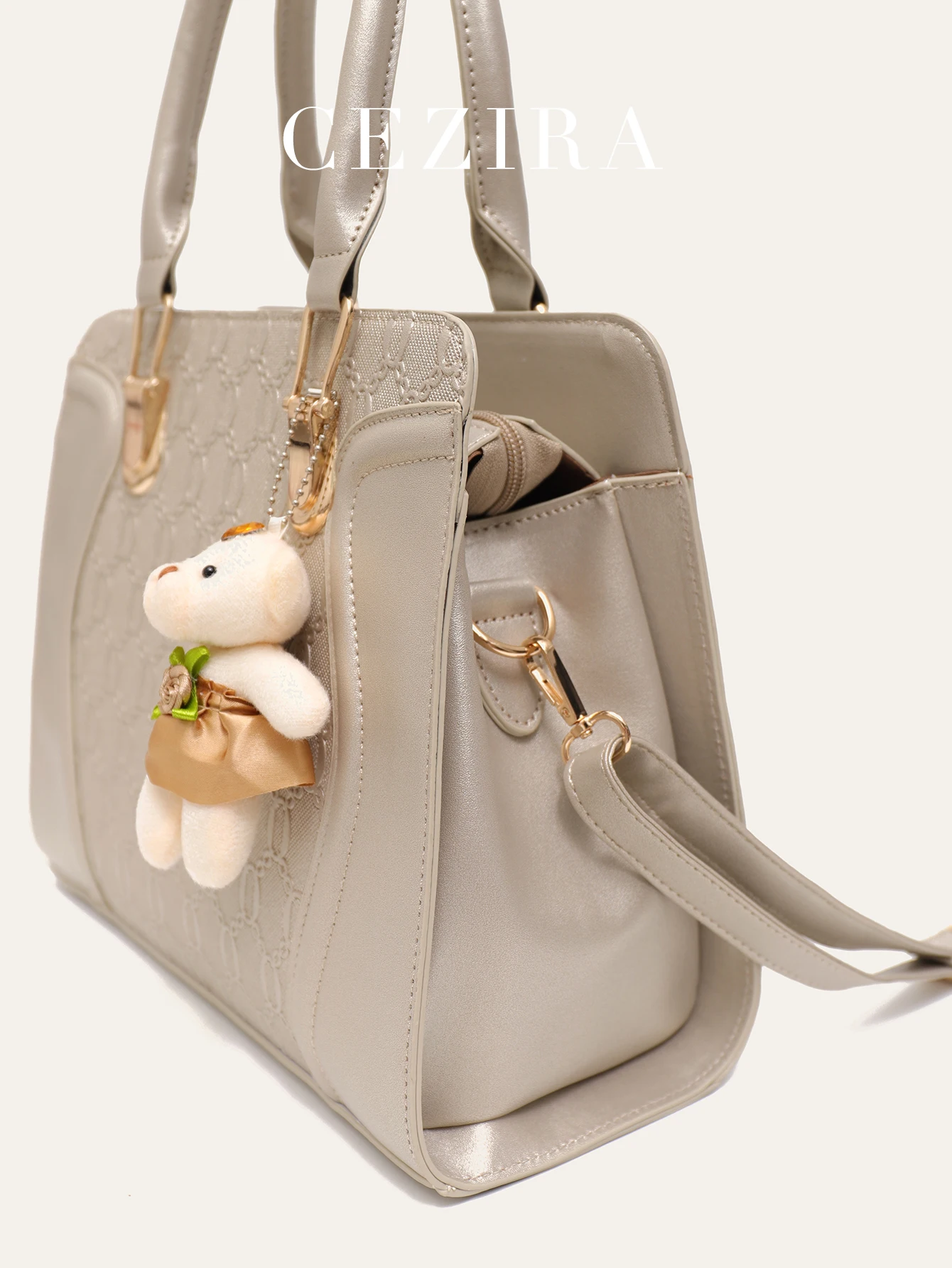
Premium Vegan Leather (PU)
Not all polyurethane (PU) vegan leathers are created equal. Premium versions used in professional bags differ substantially from basic versions found in fast-fashion accessories. High-quality PU leather achieves its professional appearance through multiple manufacturing layers:
- A durable textile backing layer provides structural strength
- A middle foam layer adds appropriate body and weight
- A specially formulated surface layer delivers the professional finish and texture
The distinction between basic and premium vegan leather becomes apparent in surface consistency, edge finishing, and wear patterns. Quality vegan leather maintains consistent texture and color even at fold points and demonstrates proper “hand feel”—the subtle weight and flexibility that signals quality.
While even premium PU has durability limitations compared to technical fabrics, quality versions can provide 3-5 years of professional service when properly maintained. Look for products featuring thicker construction, reinforced stress points, and UV-resistant formulations that prevent the yellowing that affects lower-quality alternatives.
Microfiber Vegan Leather
Microfiber-based vegan leather represents a significant upgrade from standard PU options. These materials use advanced manufacturing techniques to create non-woven ultra-fine fiber structures with performance characteristics that closely approximate premium leather.
The key advantages for professional use include:
– Superior breathability compared to PU materials
– Enhanced resistance to cracking at flex points
– More convincing surface variation that mimics natural materials
– Better aging characteristics with less color shifting over time
Professional vegan leather work totes using microfiber-based materials offer an excellent balance of refined appearance and practical durability. While typically commanding higher prices than standard PU options, their improved longevity and more sophisticated appearance make them appropriate for formal professional environments.
Cork Leather
Cork leather offers a unique option in the professional leather alternative space. Created from the harvested bark of cork oak trees (which regrow their bark, making this a renewable resource), cork leather combines natural origin with surprising durability.
Professional cork leather products feature:
– A distinctive texture that provides visual interest while maintaining professionalism
– Natural variation that develops character similar to premium leather
– Excellent water resistance and stain resistance
– Lightweight construction compared to most alternatives
Cork’s natural properties make it particularly suitable for professional environments where sustainability initiatives are valued. The material’s unique appearance works best in bags with simple, clean designs that let the material’s natural character take center stage.
Sustainable Innovations: Eco-Friendly Professional Options
Recycled PET/Polyester Materials
Modern recycled polyester fabrics transform plastic waste into sophisticated materials suitable for professional environments. Unlike earlier generations of recycled fabrics, today’s versions offer performance characteristics that rival virgin materials.
Premium recycled polyester bags typically convert between 20-40 plastic bottles into durable fabric with professional aesthetic qualities. The manufacturing process involves breaking down PET bottles into polymer flakes, which are then extruded into new fibers and woven into technical fabrics.
The environmental benefits are significant—reduced petroleum consumption, diverted plastic waste, and lower manufacturing energy requirements—while the professional applications continue to expand. Leading manufacturers now offer recycled polyester materials with various finishes ranging from subtle matte textures to more refined surfaces appropriate for client meetings.
These materials perform particularly well in structured professional backpacks and briefcases where their inherent durability complements thoughtful design. When shopping for non-leather work bags made from recycled materials, look for clear documentation of recycled content percentage and performance testing data.
Next-Generation Plant-Based Materials
Innovative plant-based materials derived from agricultural byproducts and sustainable crops are establishing a promising new category of professional bag materials. Options like apple leather (created using apple industry waste), cactus leather (derived from nopal cactus farming), and pineapple-based materials offer genuine sustainability credentials while delivering increasingly professional aesthetics.
These materials vary considerably in their current performance profiles:
- Apple leather blends apple industry waste with polyurethane to create a material with good flexibility and moderate durability, suitable for lighter professional items
- Cactus leather offers excellent weather resistance and surprising durability, making it appropriate for daily-use professional bags
- Pineapple-based materials provide unique texture and moderate durability, currently best for professional accessories rather than primary bags
While these innovative materials continue evolving, their current applications work best in design-forward professional environments where sustainability initiatives align with company values. As manufacturing scales and techniques improve, expect these materials to increasingly compete with traditional options for mainstream professional use.
Essential Professional Bag Features Beyond Material
Organization Systems
The internal organization of a professional bag significantly impacts its functionality regardless of exterior material. Well-designed professional bags balance structured organization with flexible space through:
- A padded laptop compartment sized appropriately for modern devices (typically accommodating 13-16” laptops)
- Document dividers that maintain paperwork in presentable condition
- Quick-access pockets for essentials like phones, transit cards, and pens
- Cable management solutions that prevent tangling and damage
- Secure storage for valuable items like wallets and credentials
The best organization systems anticipate professional workflow, providing logical placement for items needed throughout the workday. Consider how frequently you access different items and ensure your bag’s organization aligns with your specific requirements.
Protection Elements
Beyond organizing your professional essentials, quality bags provide critical protection through:
- Appropriate padding thickness for technology (minimum 5mm foam for laptops)
- Water-resistant exterior treatments or materials
- Interior linings that resist moisture transfer
- Protected or covered zippers to prevent water intrusion
- Structured sides that prevent crushing of contents
These protective features become particularly important for professionals who commute using public transportation or travel frequently for business. The real lifespan of PU leather office bags and other non-leather options depends significantly on these protective elements working together with quality materials.
Ergonomic Design
Even the most durable and aesthetically pleasing bag becomes problematic if it causes physical discomfort during use. Professional bags should incorporate:
- Padded handles with appropriate drop length for comfortable hand carrying
- Shoulder straps with adequate width (minimum 1.5”) to distribute weight
- Strategic padding at contact points against the body
- Weight distribution that maintains balance when fully loaded
- Appropriate proportions for the carrier’s body frame
Proper ergonomic design becomes increasingly important as professional carry requirements expand to include laptops, tablets, power supplies, and other technology alongside traditional documents and personal items. The best professional bags thoughtfully address these ergonomic considerations without compromising professional appearance.
Top-Performing Briefcases: Professional Polish with Modern Materials
The modern professional briefcase balances traditional business aesthetics with contemporary functionality. Standout non-leather options maintain the structured appearance expected in formal business environments while incorporating materials that offer practical advantages over traditional leather.
The Poise Porter Executive Ballistic delivers exceptional durability through its 1680D ballistic nylon construction reinforced at all stress points. This briefcase maintains a distinctly professional appearance through its structured design, minimal external branding, and premium metal hardware. The interior features dedicated protection for laptops up to 15.6 inches, multiple document compartments, and thoughtful organization for technology accessories. At a moderate premium price point, this option delivers excellent value for professionals in traditional business environments requiring a formal presentation.
For those seeking a more refined aesthetic approach, the Metropolitan Microfiber offers sophisticated styling through its premium microfiber vegan leather exterior with subtle texture variation. The bag’s clean lines and architectural structure create a distinctly executive presence appropriate for client meetings and formal business settings. Interior features include a padded 14-inch laptop section, expandable document capacity, and strategic pocket placement for essential items. While commanding a higher price point than technical fabric alternatives, this option delivers exceptional aesthetic refinement for image-conscious professionals.
Both options provide significant advantages for professionals seeking faux leather work tote alternatives with serious durability credentials. The selection between these styles typically depends on specific workplace culture, personal aesthetic preference, and practical requirements like technology carrying needs.
Professional Backpacks: Practical Durability for Modern Workplaces
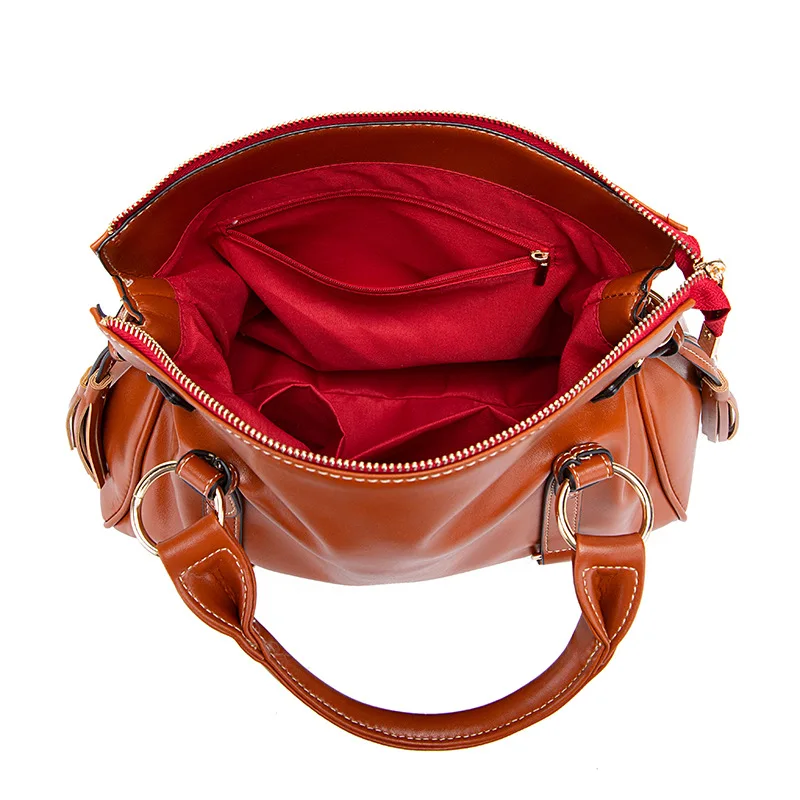
Today’s professional backpacks have evolved far beyond casual student styles to deliver business-appropriate aesthetics combined with ergonomic advantages. These options particularly suit professionals who commute by foot, bicycle, or public transit while still requiring a polished workplace appearance.
The Meridian Professional Pack exemplifies the modern professional backpack through its CORDURA® nylon construction in a structured, minimalist silhouette. Unlike casual backpacks, this model features a rectangular profile that maintains its shape whether full or partially loaded. The matte black exterior with subtle texture resists scuffs while projecting appropriate professionalism. Interior organization includes a suspended laptop sleeve for 15-inch devices, tablet protection, and dedicated spaces for documents and technology accessories. The ergonomic back panel and straps provide comfort during commutes without creating the rumpled appearance that plagues less sophisticated designs.
For creative professionals seeking more design flexibility, the Studio Professional offers a distinctive approach through its premium microfiber construction with architectural styling. The bag’s clean lines and sophisticated hardware maintain professional standards while incorporating subtle design elements that reflect creative industries’ greater aesthetic freedom. The slightly expanded organization system accommodates creative tools alongside traditional business essentials, making this an excellent choice for design professionals and creative consultants.
Both options demonstrate how modern vegan leather messenger bag alternatives can successfully balance professional appearance with practical durability. The increasingly widespread acceptance of backpacks in professional environments reflects both changing workplace norms and significant improvements in backpack design specifically for business contexts.
Versatile Totes & Messengers: Refined Alternatives for Diverse Professionals
Professional totes and messenger bags offer excellent options for those seeking alternatives to traditional briefcases or modern backpacks. These versatile formats adapt well to varied professional requirements while maintaining appropriate business aesthetics.
The Executive Messenger represents a refined approach to the messenger format, utilizing ballistic nylon construction with leather-free trim details that maintain a premium appearance. The bag’s proportions are carefully calculated for business essentials—comfortably accommodating a 14-inch laptop, documents, and daily necessities without the excessive bulk that undermines professional presentation. The adjustable shoulder strap includes substantial padding, while the streamlined exterior projects confidence in client-facing situations. This option particularly suits professionals who alternate between formal meetings and more active work environments.
For those preferring the accessibility of a professional tote, the Metropolitan Carryall delivers sophisticated styling through premium vegan leather with reinforced construction at stress points. The structured design maintains its shape throughout the workday while offering easy access to essentials. Interior organization includes secure laptop storage, document space, and thoughtfully placed pockets for small items. The dual carrying options—over-shoulder straps and hand handles—provide flexibility throughout the day. This design particularly suits professionals who value both organization and aesthetic refinement in client-facing roles.
Both formats represent excellent alternatives to traditional briefcases, offering different functional advantages while maintaining the professional appearance required in business environments. When comparing these options to traditional leather briefcase designs, consider how each format aligns with your specific workflow, commuting needs, and professional environment.
Investment Considerations: Evaluating Long-Term Value
Black Leather Satchel, Brown Leather Satchel, Vegan Leather Work Tote
Price range: $69.58 through $73.23 Select options This product has multiple variants. The options may be chosen on the product pageBlack Leather Messenger Bag, Black Leather Work Tote, Faux Leather Work Tote
$101.88 Select options This product has multiple variants. The options may be chosen on the product pageBlack Leather Work Tote, Faux Leather Work Tote, Women's Leather Business Tote
Price range: $88.81 through $93.85 Select options This product has multiple variants. The options may be chosen on the product pageBlack Leather Satchel, Faux Leather Work Tote, Vegan Leather Work Tote
$120.38 Select options This product has multiple variants. The options may be chosen on the product pageMen's Slim Leather Briefcase, Slim Leather Laptop Briefcase, Vegan Leather Briefcase
Price range: $120.82 through $131.11 Select options This product has multiple variants. The options may be chosen on the product pageClassic Laptop Briefcase, Vegan Leather Briefcase
$244.29 Select options This product has multiple variants. The options may be chosen on the product page
Assessing the true value of a professional bag requires looking beyond the initial price tag to consider total cost of ownership over its useful life. The concept of cost-per-use provides a practical framework for evaluating professional accessories—a $200 bag used 200 days per year for three years ($0.33/use) may represent better value than a $100 bag that needs replacement after one year ($0.50/use).
When evaluating long-term value in non-leather professional bags, consider:
- Expected lifespan under your specific use conditions – Daily commuting creates different wear patterns than occasional business travel
- Material durability matched to your environment – Urban commuters face different conditions than those primarily working from vehicles
- Repairability factors – Bags with simple construction and standard components can often be repaired, extending useful life
- Versatility across different professional contexts – Greater versatility means more opportunities for use, improving cost-per-use metrics
Beyond materials, look for quality indicators like reinforced stress points, bound edges (rather than raw), consistent stitching with appropriate thread weight, and YKK or similar quality zippers. These construction details often predict longevity more accurately than brand names alone.
Premium non-leather bags typically command higher initial prices but offer significant advantages in material quality, construction standards, and design refinement. Understanding how long faux leather bags last with proper care helps contextualize these price differences and make informed investment decisions aligned with your professional requirements and values.
Care Systems: Maintaining Your Professional Bag’s Appearance
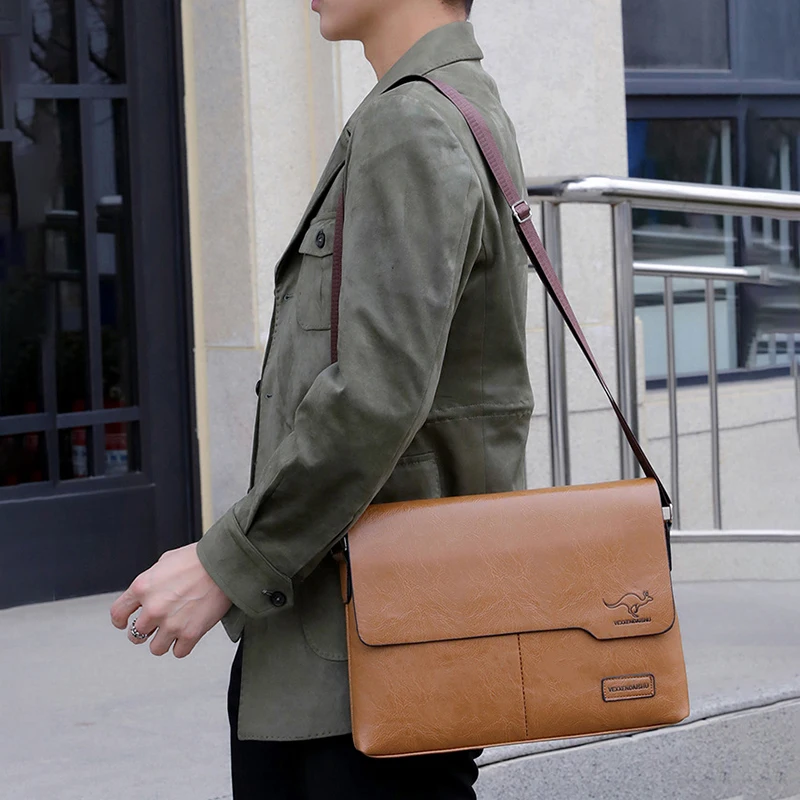
Implementing proper care routines significantly extends the professional lifespan of non-leather bags. Simple daily habits—emptying the bag completely at least once weekly, storing upright when not in use, and avoiding overpacking that stresses seams—prevent premature wear regardless of material.
Different materials require specific maintenance approaches:
Technical Fabrics (Ballistic Nylon, CORDURA®)
* Regular cleaning with a soft brush to remove dust and debris
* Spot cleaning with mild soap and water for stains
* Occasional treatment with appropriate water repellent spray
* Avoid harsh detergents that can break down water-resistant finishes
Synthetic Leathers and Microfibers
* Regular wiping with a slightly damp microfiber cloth
* Specialized synthetic leather cleaners for deeper cleaning
* Protection from prolonged UV exposure to prevent color changes
* Conditioning with appropriate synthetic-specific products (never use leather conditioners)
Sustainable/Innovative Materials
* Follow manufacturer guidance specifically for each material
* Generally benefit from gentle cleaning and proper storage
* Typically require protection from extreme temperature fluctuations
* May have specific care products developed by the manufacturer
Common problem areas require specific attention. Handle attachments benefit from distributing weight evenly and avoiding overloading. Zippers maintain smooth operation with occasional application of silicon-based zipper lubricant. Bottom corners, where bags often rest on surfaces, stay cleaner with consistent use of protective feet or careful placement.
Professional cleaning services familiar with technical materials provide a valuable option for seasonal deep cleaning, particularly for bags used in demanding environments or carrying schedules.
Identifying Quality: What to Look for When Shopping
Developing the ability to recognize quality construction enables confident selection of non-leather professional bags across various price points and brands. When examining potential options, focus on these key quality indicators:
Construction Assessment:
* Stitching should be even, tight, and without loose threads
* Look for reinforcement at stress points—particularly handles, strap attachments, and corners
* Edges should be finished cleanly—bound, rolled, or sealed rather than raw
* Interior construction should match exterior quality with well-finished seams
Hardware Evaluation:
* Zippers should operate smoothly with properly aligned teeth and sturdy pulls
* Clasps and buckles should close securely with proper alignment
* Metal hardware should have substantial weight and consistent finishing
* Attachment points should feature reinforcement and proper anchoring
Material Assessment:
* Consistent color and texture throughout the bag
* Appropriate weight and body for the bag’s intended function
* Backing or internal structure that maintains professional shape
* Clean application of any surface treatments or finishes
When shopping online where physical inspection isn’t possible, look for detailed product descriptions that specifically address construction methods and materials. Multiple photographs showing interior details, edge finishing, and hardware close-ups help assess quality remotely. Customer reviews specifically mentioning durability over time provide valuable insights beyond initial impressions.
Developing this quality assessment approach helps identify exceptional value at various price points, recognizing that construction quality often matters more than brand prestige when predicting a bag’s professional longevity.
The Professional Edge: How Your Bag Impacts Perception
Professional accessories like bags function as visual shorthand in business environments—communicating attention to detail, practical judgment, and professional values before any verbal exchange occurs. The appropriate bag signals both competence and awareness of professional context, contributing significantly to overall professional presentation.
Different workplace cultures establish different expectations for professional accessories. Traditional corporate environments typically favor structured, understated designs that complement formal business attire. Creative industries permit greater design expression while still requiring a level of refinement that distinguishes professional from casual accessories. Understanding your specific professional context helps determine the appropriate balance between personal style and workplace conventions.
Non-leather bag choices can make positive statements about personal and professional values. For professionals in sustainability-focused organizations, thoughtfully selected non-leather options demonstrate alignment with organizational priorities. In traditional environments, premium non-leather options with refined aesthetics showcase practical judgment and forward-thinking sensibility without undermining professional expectations.
The most successful professional bag choice balances personal preference with workplace appropriateness, functional requirements, and quality considerations—creating a harmonious extension of your professional identity rather than a distraction from it.
Frequently Asked Questions About Non-Leather Professional Bags
Can non-leather bags truly look as professional as leather?
Yes, premium non-leather bags can absolutely achieve professional aesthetics appropriate for business environments. The key factors are design sophistication, appropriate structure, quality hardware, and refined finishing rather than material alone. While traditional leather has historical associations with professional environments, contemporary workplaces increasingly recognize quality non-leather options as equally appropriate when properly executed with professional design elements.
Which non-leather material is most durable for daily professional use?
For maximum durability in demanding professional schedules, ballistic nylon and high-grade CORDURA® typically offer the longest service life. These materials withstand abrasion, resist moisture, maintain structure, and handle weight without showing significant wear. For professionals prioritizing appearance alongside durability, premium microfiber materials and high-quality synthetic leathers provide excellent longevity when properly maintained, though they may show wear differently than technical fabrics.
Are premium non-leather bags worth their higher price?
Quality non-leather professional bags justify their higher prices through superior materials, construction standards, and design refinement that deliver longer useful life and better functionality. The investment typically results in lower cost-per-use over time compared to budget alternatives requiring frequent replacement. Additionally, premium options generally offer better warranty coverage, repair possibilities, and consistent professional appearance throughout their lifespan.
How can I tell if a vegan leather bag is good quality?
Quality vegan leather bags demonstrate consistent texture and color throughout all surfaces, appropriate weight and body that mimics premium materials, clean edge finishing (never raw edges), substantial hardware with secure attachment methods, and careful attention to detail in stitching and construction. Better options typically use multi-layer construction with proper backing materials that prevent stretching and maintain professional structure over time.
What are signs of poor construction in non-leather bags?
Red flags for poor construction include uneven or loose stitching, raw unfinished edges, flimsy or plastic-looking hardware, inconsistent color application, weak attachment points for handles or straps, unlined interiors, and excessive chemical odors. These indicators typically predict premature failure regardless of brand name or price point and should prompt reconsideration even if the aesthetic design appeals.
Where to Shop: Finding Quality Non-Leather Professional Bags
The market for premium non-leather professional bags continues expanding across various retail channels. Specialty bag retailers focusing on professional accessories typically offer the most carefully curated selections with knowledgeable staff who can explain material and construction differences that justify price variations. These specialists often provide the most detailed information about material performance characteristics and construction methods.
Direct-to-consumer brands specializing in professional accessories have created compelling options by eliminating traditional retail markups while maintaining quality standards. These brands typically provide extensive product information, detailed photographs, and transparent policies that help offset the inability to examine products in person before purchase.
Department stores with dedicated professional accessories departments offer the advantage of comparing multiple brands and materials in person, though staff knowledge about technical details may vary considerably between locations.
When shopping online, prioritize retailers offering:
* Detailed measurements and capacity information
* Multiple photographs showing both exterior and interior details
* Clear return policies with reasonable timeframes
* Specific material and construction information beyond generic descriptions
* Customer reviews addressing long-term performance rather than just initial impressions
Take time to research the specific materials used in any professional bag you’re considering. Understanding the properties and care requirements of ballistic nylon, CORDURA®, premium synthetic leathers, or innovative sustainable materials helps set appropriate expectations and ensures your selection aligns with your professional requirements and values.

